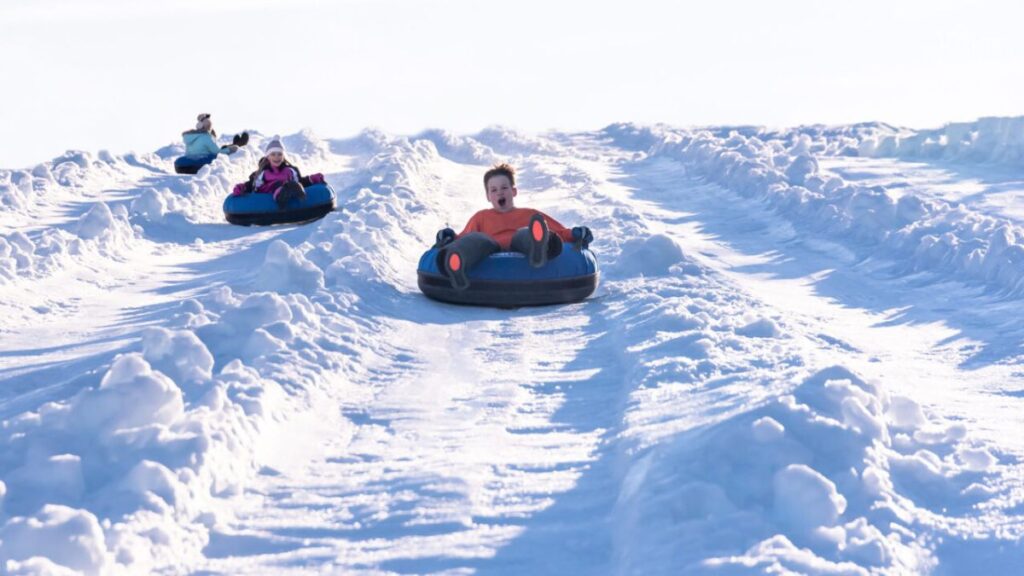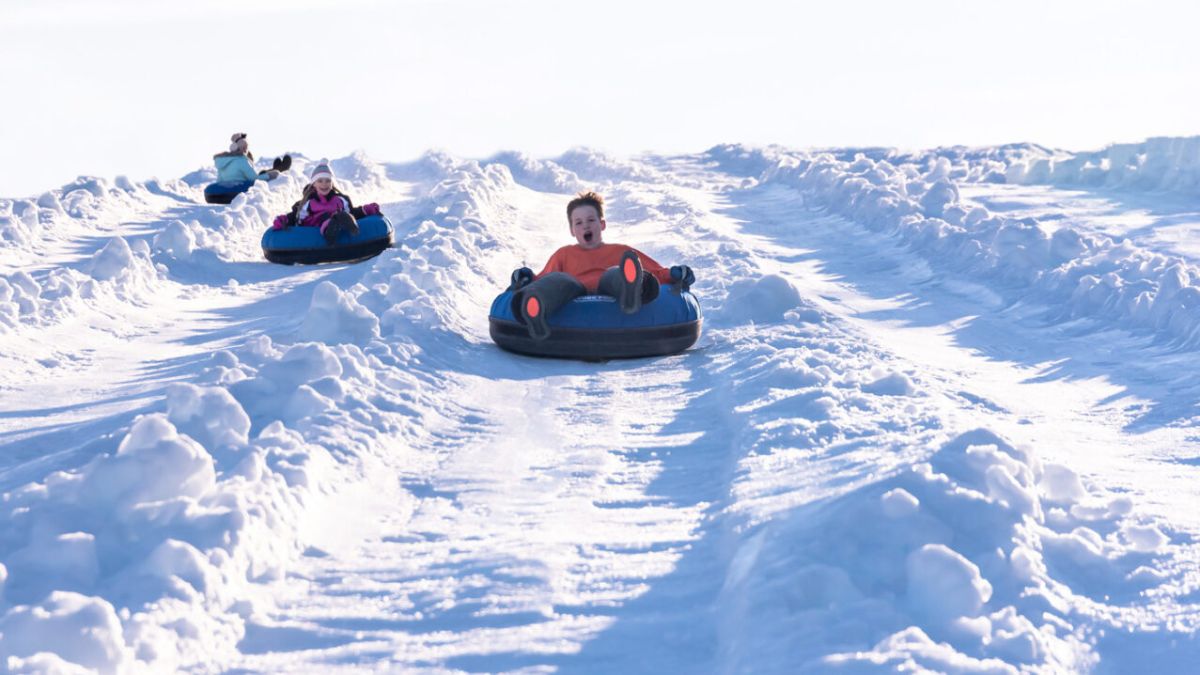Yes, it does snow in Atlanta, although it is relatively rare. Atlanta, Georgia, has a humid subtropical climate, which means that its winters are generally mild compared to other regions of the United States. On average, Atlanta receives about 2-3 inches of snow per year, spread over one or two snow events.
However, it is important to note that this is an average, and there have been winters where Atlanta received no snow at all. Certain areas in the vicinity of Atlanta, particularly the North Georgia mountains, have a higher chance of experiencing more snow due to their higher elevations.

When it comes to weather patterns, Atlanta, Georgia, is known for its hot and humid summers, but what about its winters? Many people wonder if it snows in Atlanta, a city located in the southeastern part of the United States.
Let’s explore the snowfall patterns in Atlanta and delve into the factors that influence whether the city experiences a winter wonderland or not.
Location Overview
Located in the southeastern part of the United States, Atlanta, Georgia, is the capital city of the state. With a population of over 500,000 residents in the city itself and more than 6 million in the greater metropolitan area, Atlanta is a vibrant and bustling urban center.
It serves as a major economic and cultural hub for the region, attracting visitors and residents from around the world. The city is known for its diverse and multicultural population, with residents from various backgrounds and ethnicities contributing to its rich cultural tapestry.
Transportation in Atlanta is primarily served by Hartsfield-Jackson Atlanta International Airport, one of the world’s busiest airports. The city also has an extensive network of highways and interstates, including the famous Downtown Connector, which connects Interstates 75 and 85.
Geography and Climate of Atlanta
Geographically, Atlanta is situated in the foothills of the Appalachian Mountains, at an elevation of approximately 1,050 feet above sea level. The city spans an area of about 134 square miles and is located in Fulton County, with parts extending into DeKalb County.
Atlanta’s climate is classified as a humid subtropical climate, characterized by hot and humid summers and mild winters. Summers in Atlanta are generally long and hot, with temperatures often reaching the 90s Fahrenheit with high humidity.
Winters, however, are shorter and milder compared to northern cities, with average high temperatures in the mid-50s to low 60s Fahrenheit and average low temperatures around freezing or just above.
Historical Snowfall Record
To determine the likelihood of snow in Atlanta, we can look at historical data. Over the past century, Atlanta has seen snowfall in various winters, but it is considered a rare event.
On average, the city receives about 2-3 inches of snow per year, spread over one or two snow events. However, there have been several winters where Atlanta received little to no snow.
One such event occurred in January 2014, when Atlanta experienced a significant snowfall of around 2-3 inches. The storm caused widespread disruption and led to traffic gridlock due to the city’s limited infrastructure for snow removal.
Another memorable snowstorm occurred in December 2017 when Atlanta received a light dusting of snow. This event was particularly special as it coincided with Christmas celebrations, giving residents a rare white Christmas experience.
Winter Season & Snowfall Pattern
In Atlanta, winter temperatures tend to be relatively mild compared to cities farther north. The average high temperatures in December, January, and February range from the mid-50s to the low 60s Fahrenheit.
The average low temperatures hover around freezing or just slightly above, ranging from the mid-30s to the low 40s Fahrenheit. These temperatures suggest that snowfall is possible, but it is not common.
Factors Influencing Snowfall in Atlanta
Several factors contribute to whether or not Atlanta experiences snowfall during the winter months. These factors include:
- Latitude
Atlanta’s location in the southeastern part of the United States places it at a lower latitude, which generally means milder winters. Cities farther north, such as those in the Northeast or the Midwest, have a higher probability of experiencing significant snowfall.
- Elevation
Atlanta is situated at an elevation of approximately 1,050 feet above sea level. While this elevation is not extremely high, it can slightly impact the city’s winter weather. Higher elevations in the surrounding areas, such as the North Georgia mountains, have a higher chance of seeing snow compared to the city itself.
- Moisture and Atmospheric Conditions
Moisture from the Gulf of Mexico can bring precipitation to Atlanta, but it often arrives in the form of rain due to the region’s mild winter temperatures. For snow to occur, cold air masses must collide with moisture-rich systems, creating the right conditions for snowflakes to form.
- Winter Storm Tracks
The path of winter storms greatly influences which areas receive snow. Atlanta is not typically located in the main storm track for significant snowfall. Storms passing through the Gulf Coast or the Southeastern Atlantic Coast are more likely to bring rain to Atlanta, while areas farther north may receive snow.
Locations to Enjoy Snow
While snowfall in Atlanta itself is relatively rare, there are nearby locations where residents and visitors can enjoy the beauty and activities associated with snow:
- North Georgia Mountains
Located just north of Atlanta, the North Georgia Mountains offer picturesque landscapes and opportunities for winter activities. Places like Helen, Blue Ridge, and Blairsville are popular destinations for snow enthusiasts.
- Stone Mountain Park
Located east of Atlanta, Stone Mountain Park is a year-round destination that transforms into a winter wonderland during the holiday season. The park hosts “Snow Mountain,” where you can go snow tubing, build snowmen, and engage in other winter activities.
- Brasstown Bald
As the highest point in Georgia, Brasstown Bald offers breathtaking views and often experiences snowfall during winter. Located in the Chattahoochee-Oconee National Forest, visitors can hike to the summit and enjoy the snow-covered landscapes.
- Cloudland Canyon State Park
Cloudland Canyon State Park offers a stunning winter landscape with rugged canyons and waterfalls situated on the western edge of Georgia, near the Tennessee border. You may be able to experience snowfall while exploring the park’s hiking trails or camping in the designated areas.
- Amicalola Falls State Park
Located north of Atlanta, Amicalola Falls State Park is home to the tallest waterfall in Georgia and offers scenic beauty year-round. During winter, if temperatures drop and conditions permit, you can witness the falls adorned with icicles and catch glimpses of snow on the surrounding trees.
- Banning Mills
Situated west of Atlanta, Banning Mills is an adventure resort that offers zipline tours and other outdoor activities. During the winter, if snowfall occurs, ziplining through a snow-covered forest can be a thrilling experience.
Remember, some activities and facilities may be weather-dependent and require advance reservations, so it’s advisable to plan ahead and confirm availability.
While Atlanta itself may not see abundant snowfall, these nearby locations provide opportunities to embrace winter activities and enjoy the beauty of snow-covered landscapes.
Conclusion
While Atlanta, Georgia, does not receive frequent snowfall, it is not entirely devoid of wintry weather. The city’s mild winters and geographic location make snow a rare occurrence, but there have been instances where Atlanta has seen snowstorms.
Despite the limited snow chances, Atlanta residents and visitors can still celebrate the winter season with various activities. Whether embracing the city’s festive atmosphere or venturing to nearby mountain resorts, there are opportunities to enjoy winter in Atlanta, with or without the snowflakes.
